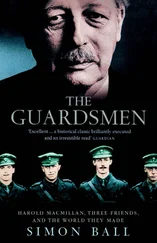Masson never gave up. Certainly the hurricane did not stop him. His next port of call was Jamaica. He had already been to six islands. We know that Masson was in Jamaica in March 1781 but not much more than that. He originally planned to try to get into central America from there but was unable to, presumably because of the continuing conflict. Instead, he finally made up his mind to return home and was back in London in November 1781.[62]
Where to go next was always the question for Masson. In December 1778, while he was still in Madeira, Masson had written to Linnaeus’s son, also called Carl (the great Linnaeus had died in early January of the same year) mentioning that he had been in touch with ‘Mr. De Visme’.[63] Indeed, just before he left Madeira for the West Indies, Masson had informed Banks that he was sending the Canary Islands collection to Lisbon to that same De Visme who would then forward it to Banks.[64] So, it is not surprising that in March 1783, Masson went to Lisbon where he met several of Banks’s acquaintances, including Gerard de Visme, who was a central figure in the English merchant community, and whom Banks had met in November 1766 on his way back to England from Newfoundland and Labrador on HMS Niger .[65]
De Visme had a garden in what is now Benfica, a suburb of Lisbon, and it would seem that he invited Masson to write up a catalogue of the plants that were growing there.[66] When he saw the garden, Masson was not particularly impressed by it or its owner – ‘he knows little or nothing of Botany or natural history’, Masson wrote to Banks, ‘but possessed a very great share of vanity and conceit.’[67] Masson declined to do the catalogue. For his part de Visme was very proud of his gardening achievements, reminding Banks that he had seen his garden in its infancy when he visited Lisbon almost twenty years earlier. De Visme claimed to Banks that the reason Masson did not undertake the catalogue was that ‘he has worn himself out with fatigue, in roving over wild grounds, & sands, in search of new productions … I expect he will add one, to ye martyrs of Botany.’[68]
If he was worn out, as de Visme wrote, Masson certainly hadn’t finished travelling for not only did he visit Lisbon, but also southern Spain, Gibraltar, North Africa and Madeira again, though the order is not clear. He was back in London by late 1784 or early 1785.[69]
Whenever he returned, Masson, as we have come to expect, was not one to stay put for very long and so, on 16 October 1785, he boarded the Earl of Talbot in Portsmouth, an East India Company vessel heading to the Cape. He arrived at Table Bay on 10 January 1786.[70] Though his reception does not seem to have been as warm as it had been the first time, and though he expressed a wish to be sent to Madras, where there was a vacancy as the East India Company’s naturalist (see Chapter 5), he remained at the Cape.[71]
Masson had been sent to the Cape a second time, as he told Thunberg, to collect living plants for Kew, as opposed to herbarium samples and seeds, from the mountains in the environs of the Cape.[72] He did not always follow his orders, as he confessed to Thunberg, but ventured further into the interior. Banks knew this as he paid Masson’s bills and though he disapproved of him not fulfilling his instructions, there was little he could do about it.[73] Masson also failed to follow his instructions exactly as to what he collected: he often sent seeds, herbarium plants and bulbs, as well as the living plants he had been sent to get.
It isn’t clear how long Masson intended to remain at the Cape but it appears that no time limit was placed on his stay. On several occasions he complained to Banks that he hadn’t heard from him in almost two years, and he feared that the letters destined for him had ended up in India or Canton as the East India Company convoys often decided to bypass the Cape. Masson carried on as if he had been instructed to stay. He had no problems collecting new and unusual plants – to Thunberg he mentioned heathers, amaryllis and protea, plant varieties he had collected before, but emphasised that he believed he had found more than twenty new species of Stapelia , which he was going to include in a monograph he was planning.[74] The problems that he did encounter were that he couldn’t always find a ship on which to send his plants back to Kew. It wasn’t that there were no ships in harbour but rather that the ones that came in on their way to England, especially from India, were often so crowded with passengers, that there was no room left for plants.
William Aiton, for whom Masson had been working for maybe thirty years, died at the beginning of February 1793 (William Townsend, his son, took over the duties at Kew) and, from this point on, the tone of Masson’s letters to Banks changed. He now began referring increasingly to wanting to return to England and by October 1794, he started settling his affairs in preparation for a return voyage. On 17 March 1795, fearing that he might get caught up in a possible conflict between Britain and the Netherlands, he found passage on a returning East India Company ship, taking his collection of living plants that he had been growing in his garden at the Cape with him, and was back in England in August of the same year.[75]
As far as one can tell from the few references he made to it in his correspondence with Banks, Masson’s botanical haul was substantial – about one half of the number of geraniums growing at Kew by 1795 had been introduced by Masson.[76] It is also clear that of all the plants he collected he was particularly proud of the Stapelia . As he told Thunberg, he intended to publish on this group and during the quiet periods at the Cape, Masson arranged his collection and began to draw the individual plants. He brought this work to fruition in 1796 when his monograph Stapeliae Novae , describing new species of Stapelia , was published in London. The book was dedicated to the King and contained descriptions of forty-one species, all laid out in proper Linnaean fashion, in Latin, and illustrated in colour.
‘Still enjoying, though in the afternoon of life, a reasonable share of health and vigour’ was how Masson described himself, aged mid fifties, in the dedication to his monograph.[77] He also added that he was ‘anxious to recommence my employment as a collector’.
‘I am ready to proceed to any part of the globe, to which your Majesty’s commands shall direct me. Many are the portions of it that have not yet been fully explore by Botanists.’ But where to? He had already been to the Cape twice, the islands of Madeira, the Canaries, the Azores and a number of West Indian islands.
Banks recognised that Masson was not done with travelling yet. ‘Masson … is Fat & Cheerfull’, he wrote to a mutual friend in Lisbon, ‘he has already got his Travelling notions Returned into his head he says he does not mean to Settle yet & if a good climate is Proposed to him will readily undertake a new voyage.’[78]
Banks knew just the place for Masson. It was Buenos Aires and its hinterland in which Banks was very interested. On 10 April 1796, Banks wrote to the Spanish Ambassador in London asking for permission to send Masson to collect seeds for Kew.[79] Masson, Banks emphasised, would keep himself to himself, not enquiring into the local political situation: he had been collecting for the King for near thirty years and he had conducted himself in an exemplary fashion.
There was no such trip, probably because several months later Spain sided with France and declared war on Britain. If Banks had set his sights in a general way on the far side of the Atlantic, any place there associated with Spain was now out of the question.
By the end of July 1797, he had decided to send Masson to North America, particularly Upper Canada. At the time Upper Canada, part of British Canada, consisted of what is now southern Ontario, and land which stretched westward following the shores of Lake Huron and Lake Superior until Lake Nipigon (west and north of here was the territory, called Rupert’s Land, ceded to the Hudson’s Bay Company in 1670): its European population, mostly recently arrived, stood at around 25,000.
Читать дальше












